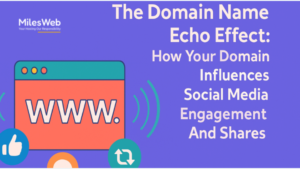Also read:
- Mastering Answer Engine Optimization: Your Blueprint For Winning Google’s AI Overviews
- SEO In 2025: Navigating The AI-Driven Frontier – From Foundational Visibility To AI-First Discoverability
- AIO For SEO: Leveraging AIO Tools To Scale Your Content & Campaigns
- Generative Engine Optimization (GEO) Unleashed: How To Become The Trusted Source For Generative AI Citations
The landscape of Search Engine Optimization has undeniably evolved. It’s no longer just about getting found; it’s about what happens after someone finds you. In 2025, the lines between SEO and user experience (UX) have blurred to the point where Search Experience Optimization (SXO) has become the new Conversion Rate Optimization (CRO). It’s a holistic approach that ensures every click from a search engine transforms into a meaningful engagement or a valuable conversion.
SXO is about meticulously optimizing your website’s UX, overall design, and technical site signals to effectively turn visitors into loyal customers. If your website isn’t delivering an exceptional experience, all your SEO efforts to gain visibility might lead to nothing but lost opportunities.
What Is SXO And Why It’s Indispensable In 2025?
SXO is the practice of enhancing the entire user journey on your website, from the moment a user clicks on your search result to the point of conversion. It goes beyond mere aesthetics, diving deep into functionality, speed, and relevance.
Why should SXO Be At The forefront Of Your Strategy In 2025?
- Improve User Engagement: A seamless and enjoyable experience keeps users on your site longer, exploring more content.
- Boost Conversions: When users find what they need easily and friction is removed, they are far more likely to complete desired actions.
- Enhance Mobile UX: With mobile-first indexing and a vast majority of searches happening on smartphones, an optimized mobile experience is non-negotiable.
- Reduce Bounce Rate: Users quickly leave sites that are slow, confusing, or irrelevant, impacting your SEO negatively. SXO keeps them engaged.
The direct impact of a strong SXO strategy on your SEO and bottom line is clear: it leads to higher conversions, better user engagement, and improved ranking stability due to positive user signals that search engines value.
Practical Guide: Integrating UX Design For Search Conversions (SXO Blueprint)
Mastering SXO means weaving UX principles directly into your SEO strategy. It’s about building a website that not only ranks well but also performs exceptionally for your users.
- Prioritize Intuitive UX Design:
- Seamless Navigation: Ensure users can effortlessly find what they’re looking for with clear menus, logical categorization, and effective internal linking.
- Engaging Visuals: Utilize high-quality images, videos, and professional design that aligns with your brand and appeals to your target audience. A visually appealing site builds trust.
- Mobile-First Approach: Design and develop for mobile devices first, then scale up for desktops. This ensures a flawless experience for the majority of users.
- Master Core Web Vitals (CWV):
- Understanding CWV: These are critical metrics that Google uses to evaluate user experience:
- Largest Contentful Paint (LCP): Measures loading performance. It’s the time it takes for the largest content element on the page to become visible. Aim for under 2.5 seconds.
- First Input Delay (FID): Measures interactivity. It’s the time from when a user first interacts with your page to the time the browser is able to respond. Aim for under 100 milliseconds.
- Cumulative Layout Shift (CLS): Measures visual stability. It quantifies unexpected layout shifts of visual page content. Aim for a CLS score of 0.1 or less.
- Optimization: Regularly audit your site’s CWV performance using tools like Google PageSpeed Insights. Address issues related to large images, render-blocking resources, inefficient CSS/JavaScript, and dynamic content. Improving page speed is a continuous effort.
- Understanding CWV: These are critical metrics that Google uses to evaluate user experience:
- Optimize for Search Intent Matching:
- Beyond Keywords: It’s not just about what words users type, but why they type them. Understand the underlying intent (informational, navigational, commercial, transactional).
- Content Alignment: Ensure that the content on your landing page directly and comprehensively answers the user’s search intent. A mismatch here leads to frustration and high bounce rates.
- Seamless Flow: The journey from search result to conversion should be logical and frictionless.

- Integrate Conversion Rate Optimization (CRO) Elements:
- Clear Calls-to-Action (CTAs): Your CTAs must be prominent, persuasive, and easy to understand. Tell users exactly what you want them to do next (e.g., “Download Guide,” “Book Consultation,” “Buy Now”).
- Streamlined Forms & Checkouts: Minimize the number of fields in forms. Ensure checkout processes are intuitive, secure, and offer multiple payment options.
- Social Proof: Strategically place testimonials, reviews, ratings, and trust badges to build credibility and encourage conversions.
- Personalization: Tailor content and offers based on user behavior and preferences to increase relevance and drive action.
- Actively Gather User Feedback:
- Strategy: Don’t just rely on analytics. Actively solicit feedback from your users through surveys, polls, heatmaps, session recordings, and user testing.
- Benefit: This direct insight reveals pain points and opportunities for improvement that data alone might miss, allowing you to refine your SXO strategy effectively.
Key Elements Of A Strong SXO Strategy
- UX Design: Intuitive interfaces and engaging visuals.
- Core Web Vitals: Optimizing for LCP, FID, CLS for a superior technical experience.
- Intent Matching: Aligning content precisely with user search intent.
- Conversion Rate Optimization (CRO): Designing for conversions through effective CTAs and streamlined processes.
Common Mistakes To Avoid In SXO
- Slow Pages: Neglecting page speed, which leads to high bounce rates and poor user experience.
- Bad Design: A cluttered, outdated, or visually unappealing website.
- Lack of CTA: Not clearly guiding users on the next steps.
- No Flow Match: A disconnect between what a user expects from a search result and what they find on your landing page.

Frequently Asked Questions (FAQs)
1. What is SXO?
SXO (Search Experience Optimization) blends SEO and UX to boost both rankings and conversions.
2. How is SXO different from CRO?
CRO focuses on optimizing after a visitor lands; SXO improves the whole journey—from search to action.
3. Why is SXO important in 2025?
With AI-driven search and higher user expectations, seamless and helpful experiences win clicks and conversions.
4. Does SXO replace SEO?
No—it builds on SEO by adding UX best practices like speed, clarity, and relevance.
5. What elements improve SXO?
Fast loading, mobile optimization, clear CTAs, helpful content, and intuitive navigation.
6. Can SXO improve search rankings?
Yes. Better user engagement and lower bounce rates signal quality to search engines.
7. How do I implement SXO on my site?
Audit your user journey, improve content clarity, page speed, and mobile experience.
Conclusion
In 2025, the successful digital presence isn’t just about appearing at the top of search results; it’s about providing an exceptional experience that converts. SXO is the convergence of robust SEO practices with compelling UX design and conversion optimization principles. By prioritizing user engagement, technical performance, and seamless conversion paths, you can ensure your website not only attracts visitors but also turns them into valuable customers.
Ready to optimize your entire search experience and boost your conversions? Partner with Digitalz Pro Media & Technologies to transform your website into a powerful conversion engine.





